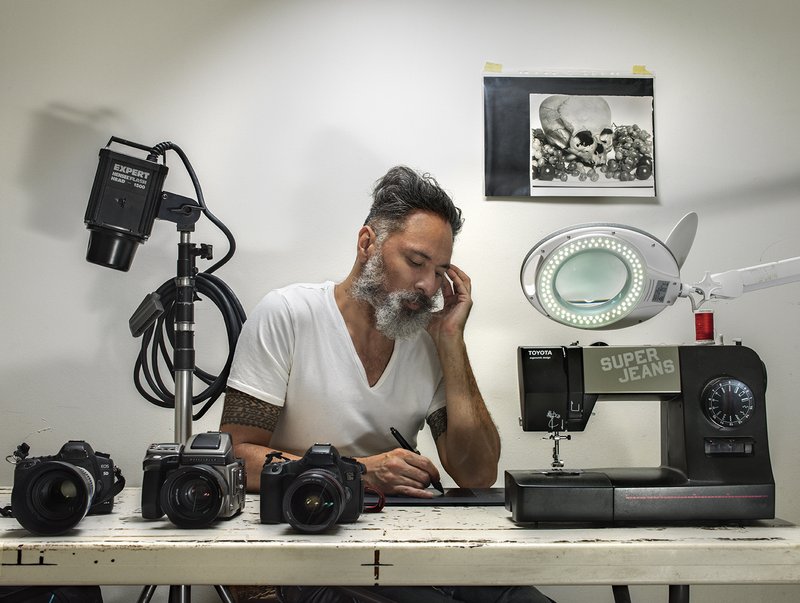Greg Semu
Greg Semu is an autodidact ‘stills’ photographer, independent researcher, visual artist and philanthropist working in the field of community arts and social justice.
Greg Semu is an autodidact ‘stills’ photographer, independent researcher, visual artist and philanthropist working in the field of community arts and social justice.

Greg Semu is a New Zealand/Samoan artist who is currently based in Sydney NSW. He investigates the consequences of colonisation, in particular the introduction of Christian religion to the Pacific Island region. Semu’s practice looks at the depiction of Pacific people as exotic, primitive savages within religious and artistic texts citing the curatorial practices of museums and institutions as perpetrators of problematic stereotyping. His focus is upon the loss of accuracy in storytelling and authentic culture through cultural displacement – a consistent byproduct of colonialism. Semu draws on his interest in classical painters such as Caravaggio to stage large scale photographic narratives, critiquing colonial discourse through the combination of cinematic landscapes and religious iconography.
Semu is currently showing as part of Oceania Rising: Wayfinders at Casula Powerhouse Arts Centre / CPAC, Liverpool, NSW, until 11 November 2018. His new work 3 Brothers, 3 bodies, 3 landscapes will be shown in upcoming exhibition Weapons for the Soldier curated by Robert Fielding, Vincent Namitjira and Anwar Young at Hazelhurst Arts Centre, Sutherland Shire, NSW, 10 November 2018 – 29 January 2019.
Recent solo exhibitions include BLOODRED, Cairns Art Gallery, Queensland (2017); Collection + : Greg SEMU, SCAF / Sherman Contemporary Art Foundation, Sydney, Raft of the Tagata Pasifika (people of the pacific), NGV / National Gallery of Victoria, Melbourne, "12", Cairns Art Gallery, Cairns, Queensland (2016); Two Bodies, two landscapes - Zwei Körper, Zwei Landschaften, Künstlerhaus Bethanien, Berlin, Germany (2015); Battle of the Noble Savage, Te Manawa Museum of Art, Science and History, Palmerston North, New Zealand (2014); and The Last Cannibal Supper, because tomorrow we become Christians, Satellite Gallery, Vancouver, Canada (2013).
In 2007 Semu was awarded the first artist in residence at the Museé du quai Branly, in Paris. Since then he has undertaken numerous residencies Unitec / Institute of Technology, Auckland; Kaohsiung Museum of Fine Arts, Kaohsiung City, Taiwan; Campbelltown Arts Centre, Campbelltown; Jean-Marie Tjibaou Cultural Centre - Agency for the Development of Kanak Culture / ADCK, Nouméa, New Caledonia; Elcho Island Arts Centre, Elcho Island Galiwinku, NT; Kunstlerhaus Bethanien, Berlin; and most recently at the Waverly Artist Studios, Bondi, NSW.
His work is held in the public collection most major Australian galleries as well as public collections in France, Germany, New Zealand, New Caledonia and Taiwan.
In this video, Semu talks to NAVA about explaining the costs of production to administrators, the value of residencies to the development of practice and his perspective on what defines 'art'.
Video: Dominic Kirkwood
Photo: Greg Semu, courtesy the artist